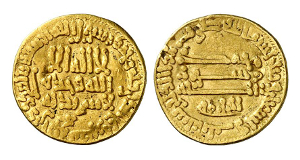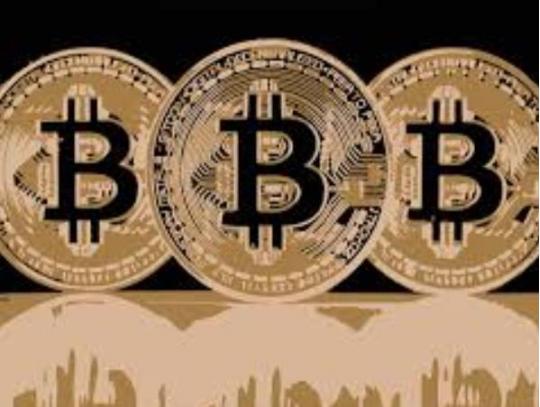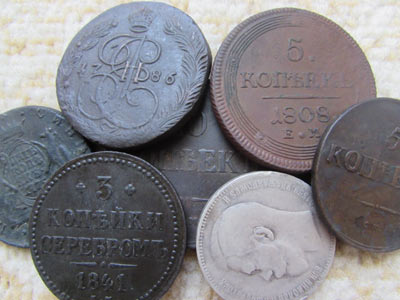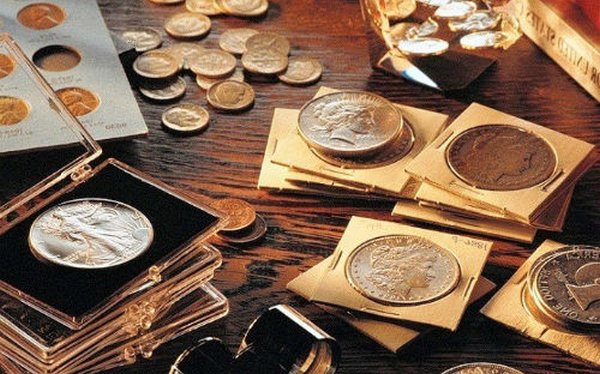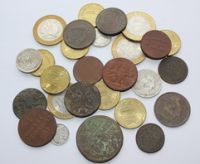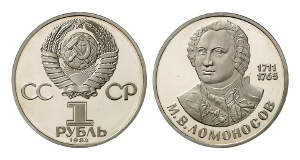Ancient coins
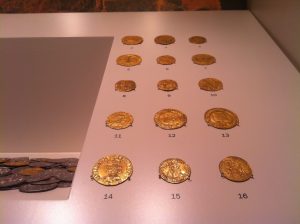 1. Old coins of Russia – gold and silver coins of Prince Vladimir
1. Old coins of Russia – gold and silver coins of Prince Vladimir
These were the first coins minted in Kievan Rus at the end of the 10th century, then at the beginning of the 11th century, they were issued in small quantities and not for long, so they didn’t have much influence on monetary circulation but represent a peculiar group of cultural monuments of Ancient Russia.
Under Prince Vladimir Svyatoslavovich in 988, Christianity became the official religion in Russia. In the cities, the oldest of which were Kiev, Novgorod, Ladoga, Smolensk, Moore, crafts and trade with the southern and western Slavs, the peoples of other countries were actively developed. This led to the beginning of the first production of their own coins of gold and silver.
The first Russian gold and silver coins were called gold coins and silver coins, respectively. In diameter, zlatniks reached 24 mm, and by weight they were equated to the Byzantine solid – about 4.2 g. Subsequently, zlatnik became a Russian weight unit called a spool (4.266 g). Coin circles for coinage were molded in folding forms, which explains the presence of visible casting defects on Zlatniks and a significant difference in weight. For the manufacture of silver used silver Arab coins.
Zlatniki and srebreniki minted common stamps. Obverse: A half-length image of the prince indeed, probably seated (judging by the bent small legs under the figure); in a raincoat, fastened on the chest, in a hat with pendants and a cross; in his right hand a cross on a long pole, his left – pressed to his chest. At the left shoulder of the princely sign – a trident. Around the circular inscription from left to right (occasionally from right to left): VLADIMIR ON THE TABLE (or VLADIMIR A SE ITS BRINN). Around linear and point headbands.
Reverse: A busting image of Jesus Christ, with a baptized nimbus; the right hand is in a gesture of blessing, in the left is the gospel. Around the circular inscription from left to right (occasionally from right to left): ICUS CHRIST (or IC XC under the titles). Around linear and point headbands.
According to experts, the issue of its own coins in Kievan Rus was caused, on the one hand, by the fact that in the economy of the ancient Russian state of the second half of the 10th century. There was a noticeable lack of silver coins due to a reduction in the income of Arab dirhams, on the other hand, political motives, since the presence of one’s own coins served the task of glorifying the Kiev state and establishing its sovereignty, as evidenced by the appearance of these coins. Despite the fact that they had significant differences (there are about 11 design options), the obligatory attributes were the image on the face of the seated Grand Duke of Kiev with a halo over his head, a long cross in his right hand and his left pressed to his chest, and on the reverse – the image of Jesus Christ, which in the XI century. It was replaced by a peculiar state emblem in the form of a trident (the so-called generic sign of Rurikovich).
On the front side of the most common coins of that time there is an inscription in Old Slavic letters “VLADIMIR ON THE TABLE”, i.e., occupying the throne, ruling, and on the reverse side – “And it’s HIS SILVER”, which means: “And this is his money.” For a long time in Russia the word “silver” (“silver”) was synonymous with the word “money.” There are also coins with an inscription on the front side of “VLADIMIR A CE HIS SILVER (or ZLATO)”, and on the reverse side – “ISCH CHRISTOS”.
Zlatniki of Prince Vladimir were issued a little more than ten years – until the end of the X century. (11 copies are known), and silver coins – and in the XI century, both by Vladimir and his short-term (from 1015 to 1019) successor on the grand throne’s throne elder son Svyatopolk Damned (78 copies are known). The termination of the regular influx of oriental silver and the absence of its own raw material base doomed this economic undertaking to a quick conclusion. In total, up to our time, no more than 350 gold and silver coins of ancient Russia have been preserved. Including about ten pieces of silver by Yaroslav the Wise, which were minted in Novgorod, where he ruled until the Kiev throne was seized in 1019. On the obverse side of the Novgorod silver coins there was a bust image of St. George On the back side is the inscription “Yaroslavl Srebro” around the image of a princely sign in the form of a trident with a circle on the middle tooth.
2. Hryvnia, ruble, poltina
The hryvnia, in the non-monetary period from the 11th to the 15th century, corresponded to a certain amount (weight) of the precious metal and was a monetary-weight unit – “silver hryvnia”. She could be equal to a certain number of identical coins and in this case was called “hryvnia kun”. Kuns were called silver coins, Arab dirhams that circulated in Russia, and later European denarii.
